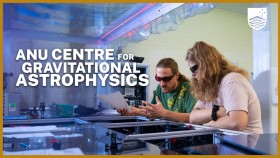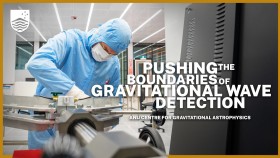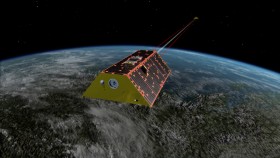It’s written in the stars: How maths can unveil the wonders of the universe
Like many of us, recent graduate Mallika Sinha wanted to become an astronaut when she grew up. Then, after seeing images of the rings and moons of Saturn taken by NASA's Cassini probe, she realised there was something even more exciting: astrophysics.
“I didn’t fully understand the science at the time, but now I do,” she says. “I shed a tear when I watched the video of Cassini burning up in the atmosphere as it descended into Saturn.”
Mallika moved from Brisbane to ANU to study a Bachelor of Mathematical Sciences combined with a Bachelor of Science, the perfect combination for pursuing her love of the cosmos.
In second year, she took up a Summer Research Scholarship opportunity to study shock waves with the ANU Research School of Astronomy & Astrophysics.
“Like a sound wave, shock waves move through matter in space,” she explains. “And because of the energy, lots of cool things happen: hydrogen and the other elements that make up the matter can fully ionise, and X-rays can even be emitted.”
Mallika needed to use complex mathematics to uncover their hidden secrets.
“It was a great application of what I was learning in my Bachelor of Mathematical Sciences,” she says. “My applied maths courses involved a lot of models, computers and coding which helped the physics side of my degree.”
Not content with just one summer research experience, Mallika decided to return to the program again in her third year, this time working with the ANU Centre for Gravitational Wave Astrophysics and the ARC Centre of Excellence for Gravitational Wave Discovery.
“At ANU, there is a focus on neutron star collisions which, like black hole collisions, make gravitational waves.”
At only 20 kilometres in diameter and about one and a half times the mass of our sun, neutron stars have a lot of energy. Still, they are not on the same scale as black holes, and their collisions don’t make anywhere near as big a splash in the fabric of space-time.
To help the hunt for such tiny drops in the ocean, Mallika turned to mathematics again.
“I looked at numerical waveforms from neutron star merges, then coded this into a computer model to predict what gravitational waves we would see on a detector.
“I loved this project so much that I just kept doing it.”
Mallika lengthened her research project for more than half the year, by adding a Research Topics Physics course in first semester, and then a winter research project.
After graduation, Mallika is joining the gravitational waves team once again, this time for honours.
“I’ll be studying black hole mergers and the gravitational wave signals they emit,” she says. “I want to look at the physics and maths of that signal and see what we can learn about black holes and general relativity.”
Since dreaming of space as a kid, Mallika now knows you don’t need a spacesuit to explore the biggest mysteries of our universe. But you do need some good maths.








